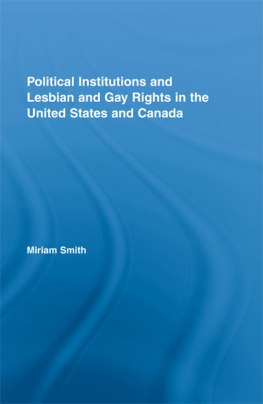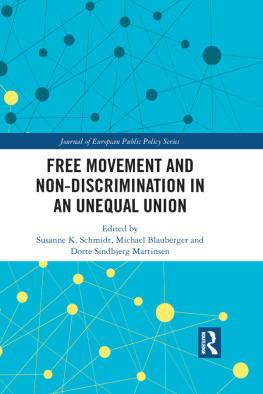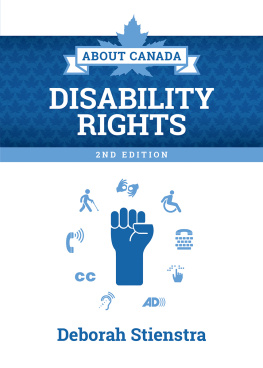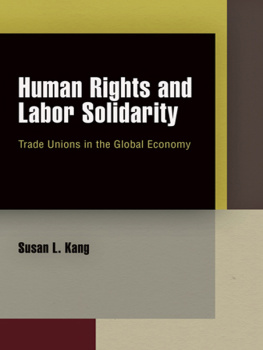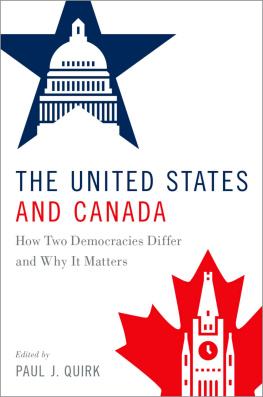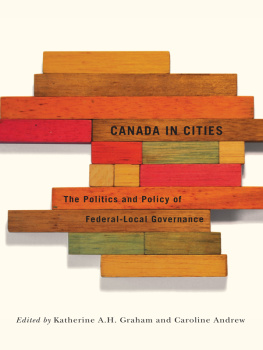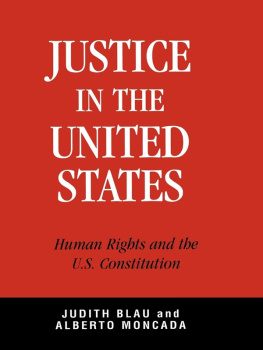Routledge Studies in North American Politics
1. Political Institutions and Lesbian and Gay Rights in the United States and Canada
Miriam Smith
Political Institutions and Lesbian and Gay Rights in the United States and Canada
Miriam Smith

New York London
First published 2008
by Routledge
270 Madison Ave, New York, NY 10016
Simultaneously published in the UK
by Routledge
2 Park Square, Milton Park, Abingdon, Oxon OX14 4RN
Routledge is an imprint of the Taylor & Francis Group, an informa business
This edition published in the Taylor & Francis e-Library, 2007.
To purchase your own copy of this or any of Taylor & Francis or Routledges collection of thousands of eBooks please go to www.eBookstore.tandf.co.uk.
2008 Taylor & Francis
All rights reserved. No part of this book may be reprinted or reproduced or utilised in any form or by any electronic, mechanical, or other means, now known or hereafter invented, including photocopying and recording, or in any information storage or retrieval system, without permission in writing from the publishers.
Trademark Notice: Product or corporate names may be trademarks or registered trademarks, and are used only for identification and explanation without intent to infringe.
Library of Congress Cataloging in Publication Data
Smith, Miriam Catherine. Political institutions and lesbian and gay rights in the United States and Canada / Miriam Smith.1st ed.
p. cm. -- (Routledge studies in North American Politics ; 1)
Includes bibliographical references and index.
ISBN 978-0-415-98871-1
1. Gay rightsUnited States. 2. Gay rightsCanada. 3. Gay menLegal status, laws, etc. 4. LesbiansLegal status, laws, etc. 5. Same-sex marriageUnited States. 6. Same-sex marriageCanada. 7. Sex discriminationUnited States. 8. Sex discriminationCanada. 9. United StatesPolitics and government. 10. United StatesPolitics and government. I. Title.
HQ76.8.U5.S65 2008
323.32640973dc22
2007051460
ISBN13: 978-1-135-85919-0 ePub ISBN
ISBN10: 0-415-98871-3 (hbk)
ISBN10: 0-203-89501-0 (ebk)
ISBN13: 978-0-415-98871-1 (hbk)
ISBN13: 978-0-203-89501-6 (ebk)
Preface
Over the last twenty years, scholars in the fields of American political development (APD) and historical institutionalism have introduced new ways of thinking about American politics. By asking the big questions about the historical trajectory of the U.S., scholars in these areas have deployed a macro-historical and macro-sociological lens, similar to that long used in studies of European political development or even in studies of development in the global south. Topics such as state-building (Skowronek 1982; Orren and Skowronek 2004), citizenship (R. Smith 1999), the development of the welfare state (Pierson 1994), the impact of business and labor organizing (Orren 1992), and, most recently, the gendered development of social policy (Mettler 1998) and the politics of race (Frymer 1999; Lieberman 2005; Lowndes, Novkov and Warren 2007) have taken the study of U.S. politics in new directions. The result has been the creation of a defined field of American political development, one that overlaps with historical institutionalism, which has also come into its own over the same period as an approach within the field of comparative politics. Historical institutionalism is distinguished by its attention to specific sets of propositions about the role of political institutions in structuring political life, the impact of institutional configurations and the legacies of previous policies on policy outcomes, and the role of time and timing in relation to long-term social and political processes (Pierson and Skocpol 2002).
This book draws on these approaches to explore the recent evolution of lesbian and gay politics and public policy, a topic that has not received a great deal of attention in either the APD or historical institutionalist literatures. Engel 2007). Along with gun control and abortion, gay rights is often treated as a question of morality politics, that is, a question about which Americans have well-developed and seemingly immovable views of right and wrong, as a hot-button issue that is used by the Christian Right to mobilize its base, and as a public policy issue arena in which public opinion plays a key or even determinative part (Rom 2007; Lofton and Haider-Markel 2007).
In contrast, this study understands sexuality as a system of social power that structures gender relationships. States contribute very directly to the construction and production of this system by choosing to recognize (or not) specific gendered relationships and sexual preferences. While lesbian and gay rights might appear as a boutique issue that affects only a small group in society, a structural approach to gender and sexuality draws our attention to the fact that all public policies are gendered and sexed in particular ways. Heterosexuals and heterosexual relationships are part of the sex/ gender system and benefit in specific material ways from the unequal power relationships that are encoded in public policy (Canaday 2003). Other topics in comparative public policy analysis such as health care or social policy may just as well be defined as issues of morality politics given that these topics concern fundamental questions of power, justice, and inequality. The tools of APD and historical institutionalism may be used to understand the development of the most recent period of U.S. public policy on lesbian and gay rights, just as they can be used to understand fiscal policy or welfare policy. States differ in the way they treat their lesbian and gay citizens and, like any other area of public policy, these differences can be described, understood, and explained as a task of critical comparative analysis. As this study will show, public opinion and political culture are important. However, a solid analysis of, and explanation of, lesbian and gay politics also requires that we pay attention to other factors. Notably, as historical institutionalists have suggested, public policies are shaped by the structure of political institutions and by the legacies of past policies; APD and historical institutionalist approaches also emphasize the importance of understanding the process of political change in terms of historical trajectories rather than through snapshots of the political world.
Building on these perspectives, I undertake a close comparison of lesbian and gay rights policies in the U.S. and Canada from 1969 to 2005, covering the period from the rise of the gay liberation movement through the Lawrence and Goodridge decisions in the U.S. in 2003 and the legalization of same-sex marriage in Canada in 2005. Historical institutionalist and APD scholarship emphasize the importance of critical junctures and turning points in which new policy pathways are set or new political orders are constituted. In Canada, in 1969, homosexual sodomy was removed from the Criminal Code while, in the U.S., an analogous development had to await the Supreme Courts ruling in Lawrence. Therefore, the starting point of the study is marked not only by the years of the emergence of the gay liberation and lesbian feminist movements but also by an important initial policy divergence between the two cases. This divergence persists over the entire time period covered in the study, which closes with the passage of statutory and constitutional bans on same-sex marriage in many states in the U.S. contrasted with the legalization of same-sex marriage in Canada in 2005. While public opinion and political cultural approaches have dominated the empirical study of lesbian and gay politics, the analysis here focuses on the role of political institutional structures and legacies of previous polities in shaping the policy trajectory on lesbian and gay rights over time. By using a macro-historical approach to exploring the shifts in these policies, the analysis highlights the extent to which institutional and policy legacies provide a context for political leadership and for social movement mobilization.

